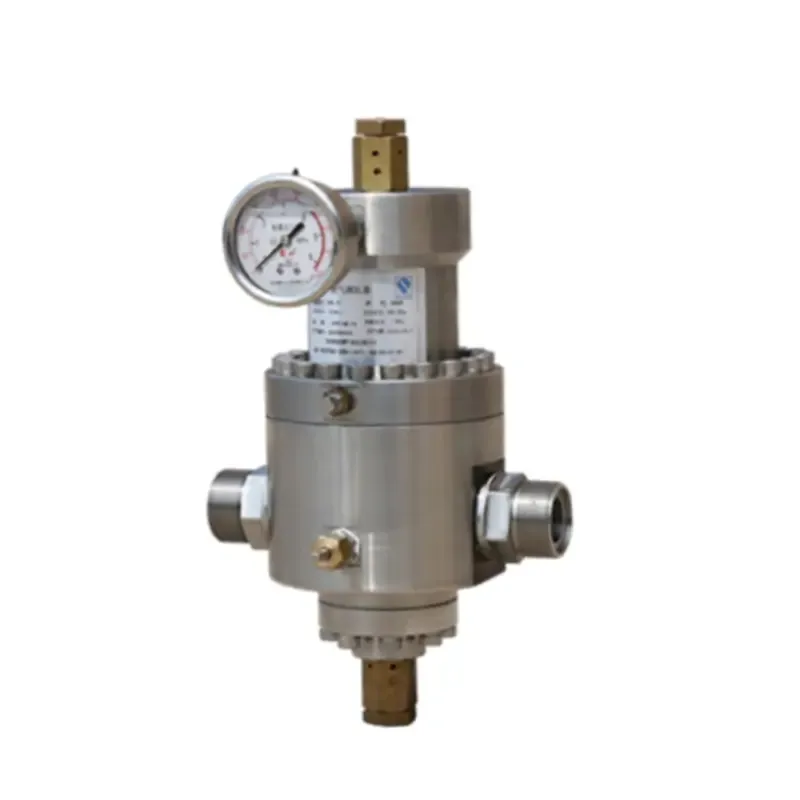
12 月 . 04, 2024 09:23
Back to list
Design and Applications of Gas Heat Exchangers in Energy Systems
Heat Exchangers for Gases An Overview
Heat exchangers play an essential role in various industrial applications, particularly in the transfer of heat between two or more fluids. One of the most significant types of heat exchangers is the gas-to-gas heat exchanger. These devices efficiently utilized in power generation, chemical processing, and HVAC systems facilitate the transfer of thermal energy from one gas stream to another, optimizing energy use and enhancing system performance.
What is a Heat Exchanger?
A heat exchanger is a system designed to transfer heat between two or more fluids, which could be liquids, gases, or a combination of both. The primary function of a heat exchanger is to boost energy efficiency by capturing waste heat from one process and using it to preheat the incoming feed to another. This process not only conserves energy but also reduces overall operational costs.
Types of Gas Heat Exchangers
There are several designs of gas-to-gas heat exchangers, each suited for particular applications
1. Counterflow Heat Exchanger In this design, the two gas streams flow in opposite directions. This configuration allows for a more efficient heat transfer as the temperature gradient between the two gases remains high throughout the unit. Counterflow heat exchangers are commonly used in applications requiring maximum thermal efficiency.
2. Parallel Flow Heat Exchanger In this system, both gas streams flow in the same direction. While it is typically less efficient than counterflow designs, parallel flow heat exchangers can be simpler to construct and are suitable for certain applications where the temperature difference is not significant.
3. Crossflow Heat Exchanger In crossflow designs, one gas stream flows perpendicular to the other. This configuration can be advantageous in applications where space is limited and provides reasonable efficiency.
4. Plate Heat Exchanger These consist of multiple plates that create channels for the gas streams to flow through. They are known for their compact design and ease of maintenance, making them suitable for various industrial applications, particularly where space is at a premium.
.
Gas heat exchangers are utilized across numerous industries
مبادل حراري للغاز

- Power Generation In power plants, heat exchangers are used to recover waste heat from exhaust gases and use it to preheat combustion air or feedwater. This process can significantly improve overall efficiency and reduce fuel consumption.
- Chemical Processing Many chemical processes require precise temperature control. Gas heat exchangers help maintain optimal reaction temperatures by recovering and transferring heat between different process streams, ensuring optimal yield and minimizing energy expenditure.
- HVAC Systems In heating, ventilation, and air conditioning systems, gas-to-gas heat exchangers can help recover heat from exhaust air, transferring it to incoming fresh air. This process enhances energy efficiency and reduces heating costs during cold weather.
- Automotive Industry In internal combustion engines, gas heat exchangers are used to manage exhaust gas temperatures, thereby improving engine efficiency and reducing emissions.
Advantages of Gas Heat Exchangers
The implementation of gas heat exchangers presents several benefits
- Energy Efficiency By recovering and utilizing waste heat, gas heat exchangers significantly reduce energy consumption, leading to lower operational costs.
- Reduced Environmental Impact Increasing energy efficiency helps in reducing emissions and conserving resources, contributing to a more sustainable industrial operation.
- Cost-Effectiveness While the initial investment might be substantial, the long-term savings in energy costs often justify the expense. Further, many gas heat exchangers are designed for longevity and require minimal maintenance.
Conclusion
Gas heat exchangers represent a crucial component in achieving energy efficiency across various industrial applications. Their ability to recover and transfer heat not only enhances performance but also contributes to sustainability efforts within industries. As technology advances, the design and efficiency of these systems continue to improve, further enhancing their importance in the modern industrial landscape.
Latest news
-
Unlocking The Quality Gas Pressure ReducersNewsNov.01,2024
-
The Role of Gas Pressure Reducing StationsNewsNov.01,2024
-
The Importance and Functionality of Safety Relief ValvesNewsNov.01,2024
-
The Essential Role of Safety Valves in Natural Gas ApplicationsNewsNov.01,2024
-
The Essential Role of Gas Pressure RegulatorsNewsNov.01,2024
-
Enhance Your Premium Gas FiltersNewsNov.01,2024

